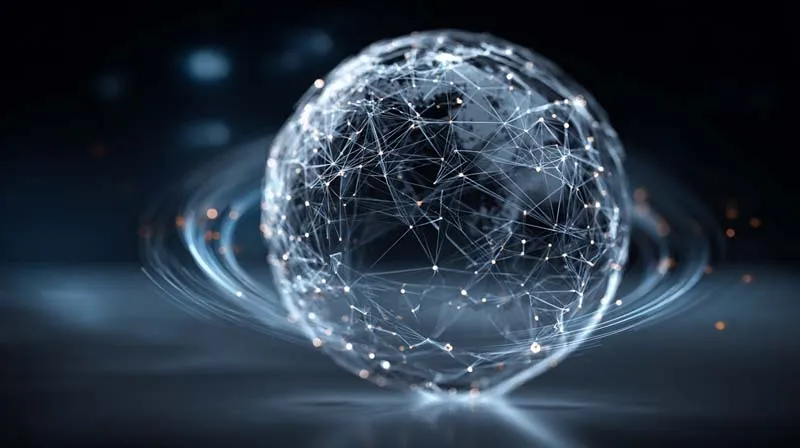The intelligence of the Internet of Things (IoT) is going through a major change.
For the past decade, most smart systems have relied on the cloud as the brain of intelligence. Data from factories, transportation, or homes was sent to faraway servers for analysis and decisions. But as data grows rapidly and real-time response becomes critical, this “cloud-only” model shows clear limits—network delays, bandwidth pressure, higher energy use, and privacy risks.

Now, a new shift has begun: intelligence is moving closer to the devices themselves.
Smartness is no longer trapped in the cloud but is spreading to the edge—where devices can think, decide, and act locally. This is the rise of edge intelligence, the next step that makes the intelligence of the Internet of Things truly self-thinking.
1. From Cloud to Edge: The New Home of Intelligence
In the traditional model, data had to travel long distances to be processed, causing delay and security issues. Edge computing changes this by allowing data to be processed right where it is created. Devices and nearby nodes can analyze and decide in real time.
This shift is not only about faster computing—it means intelligence itself is evolving.
With the help of AI chips and edge processors, devices are no longer passive sensors; they can now make local judgments, learn from their environment, and adapt on their own.
2. AI Chips: Giving Devices a “Brain”
In the past, AI models were too large and energy-hungry for small devices.
Now, new chips like Google Edge TPU, Huawei Ascend, NVIDIA Jetson, and Cambricon have changed this.
They use low power, high efficiency, and small AI models to perform image recognition, voice control, and object detection directly on the device.

For factories, this means machines can make split-second decisions.
For smart homes, it means private data can stay inside the house.
Thanks to these chips, the intelligence of the Internet of Things can now truly “wake up” at the edge—devices can think faster and smarter than ever.
3. Real-World Applications: Thinking Devices Everywhere
In smart factories, edge AI gives machines instant decision power.
Robots and sensors can detect unusual vibration or heat and act immediately to avoid breakdowns—saving cost and time.
In smart homes, speakers, cameras, and air conditioners can understand user habits locally.
They adjust lights or temperature automatically without sending data to the cloud.
Homes become warmer, safer, and more personal.

In drones and self-driving cars, edge AI brings safety and autonomy.
Drones avoid obstacles and plan routes without waiting for remote instructions.
Cars process sensor data in milliseconds, even without a stable network.
Devices now think and react like independent minds.
4. A New Ecosystem: Cloud–Edge–Device Collaboration
The future of IoT will not choose between cloud or edge—it will use both together.
- The cloud will handle big data and model training.
- The edge will manage real-time reasoning and fast actions.
- The devices will sense and respond immediately.
In this cooperative system, intelligence becomes both global and local.
Cloud models keep learning through federated learning, while edge devices send back fresh data for updates.
This creates a living, self-improving loop of intelligence.
Smartness is no longer concentrated in one place—it spreads across everything.
Every node becomes a small unit of wisdom.
5. The Future: When Everything Can Think
Edge intelligence turns the Internet of Things from a “network of sensors” into a “network of thinkers.”
Devices will not only execute commands but also learn and cooperate.
Factories, cities, energy grids, and hospitals will all rely on this distributed smart network.
Each device will have self-learning and self-optimizing ability.
Together they will form a kind of “collective brain,” sharing knowledge instantly.
Thus, the intelligence of the Internet of Things becomes creative, independent, and shared.
This revolution changes not only technology but also the way we see the world.
Humans and machines are moving from command and response toward understanding and harmony.

6. Conclusion: The Real Intelligence Lives at the Edge
The intelligence of the Internet of Things is completing its great journey—from cloud awakening to edge self-thinking.
It makes our world faster, safer, and more efficient, and helps machines better understand people.
In the near future, intelligence will not sit in distant servers but will live inside every device that can think.
True wisdom is not about control—it is about cooperation.
For over twenty years, EELINK Communication has focused on wireless communication and IoT hardware development. Its products include temperature and humidity monitoring platforms, asset management systems, vehicle security and insurance solutions, and cold-chain logistics management. EELINK Communication believes that intelligence should not stop at connection—it should extend to thinking. Through constant innovation, EELINK continues to bring smart, reliable, and efficient IoT solutions to life, creating real value and driving the connected world forward.
